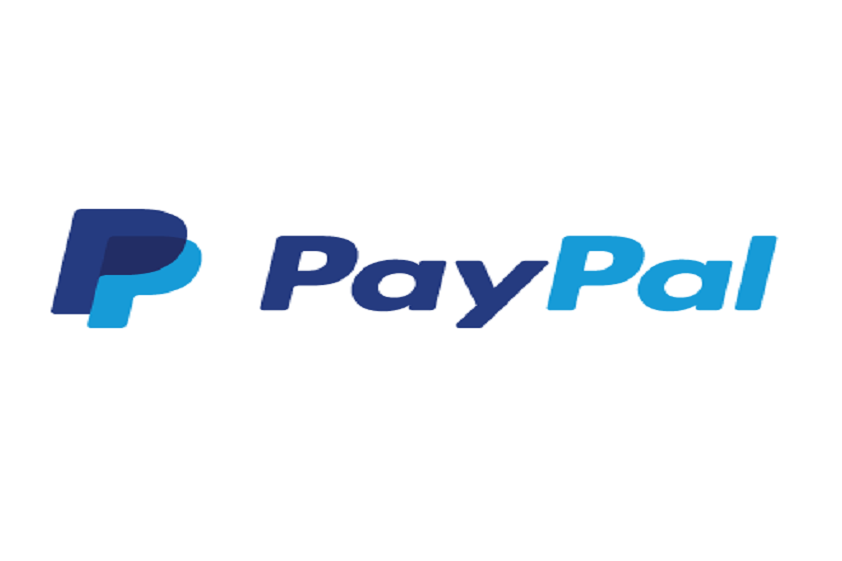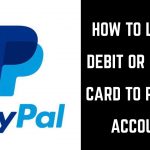This is a simple question that most of us ask when we first start to use PayPal, but it can get quite confusing to link to a bank account if you don’t know the answer! in this blog, we will discuss the steps of linking bank accounts.
Paypal is a platform that allows its users to send and receive money using the internet. You can use PayPal to transfer money to friends, family members, or anyone else. It is very common to send money from one PayPal account to another. But there is a difference between linking your bank account and debit card on PayPal. The PayPal accounts linked to your debit card allow you to add money to your account whenever you make a purchase. The PayPal accounts linked to your bank account allow you to withdraw money from your account whenever you have money in your PayPal account.
1. Liking debit cards to PayPal

If you want to use PayPal and debit cards together, you need to link the two. Once you do so, PayPal will process all transactions through the linked account. Once that’s done, PayPal will also send you a notification when a transaction is made. The notification will give you the option to approve or decline the transaction. You can also choose to only approve purchases above $10. If you don’t want to go through the whole process, you can just link your bank account and debit card to PayPal.
2. Linking bank account to PayPal
The second step is to link a bank account to PayPal. In order to complete this, you’ll need to provide the following details: a phone number, address, date of birth, and email address. Once you’ve linked your account, you’ll be given a unique access code and PIN that you’ll need to enter when making purchases.
3. Advantage of linking a bank account to PayPal
PayPal is a secure, convenient payment service that helps online shoppers make fast and easy purchases from stores like Amazon, eBay, and Walmart. But in order to take advantage of the service, shoppers must link their bank accounts to their PayPal accounts. By providing access to the full range of online payments, PayPal can offer its customers the ability to shop wherever they are — 24/7/365. PayPal’s goal is to connect people who want to buy stuff with people who want to sell stuff. It provides a convenient platform for online transactions.
4. Advantage of linking a debit card to PayPal
It doesn’t matter whether you’re a blogger or a business owner, if you’re looking for more ways to drive more traffic, then using a tool like PayPal is a smart move. PayPal’s ability to integrate with many platforms, including WordPress, makes it the perfect tool for online marketers. Using PayPal’s “linked debit card” feature will allow you to increase your conversion rates.
5. Pros of PayPal
In addition to being quick and easy, PayPal is secure, reliable, and convenient. Paypal is widely used as a payment method for online purchases because it’s the only platform that provides a safe, reliable, and convenient way to pay for online purchases.
The biggest pro for PayPal is that it is available in all 50 states in the US. Although the transaction fee may seem high, it can be cheaper than credit card fees. If you are selling items on Amazon or eBay, PayPal is a convenient way to receive payments. However, if you are selling products that require a large upfront cost, PayPal may not be an option.
PayPal is a free online payment processing system that is available to any business with a website. PayPal is a payment gateway or “middleman”, which means that it acts as a go-between between businesses and customers. With PayPal, a business can accept credit card payments, debit card payments, and/or online payments.
6. Cons of PayPal
The main disadvantage of using PayPal is that there are no limits on the number of transactions per month, but there are also limitations on the amount that you can send through PayPal (you can send $2,500 USD per month to up to five recipients). You’ll also have to pay fees on every transaction.
When it comes to online payments, there are pros and cons to every option. However, the one with the least negatives, and highest security, is PayPal. While some merchants are concerned about the risk of fraud, most are comfortable with the process. Once you’re set-up, the transaction process is very simple and quick. And you don’t have to wait to receive payment until the end of the month—you get paid immediately.
The biggest downside to PayPal is that it requires a credit card. In many cases, there isn’t always a good alternative, but PayPal is still a convenient way to pay online.
PayPal has been accused of not paying merchants on time, not keeping accurate track of transactions, not allowing for refunds, and even taking advantage of customers. PayPal has been known to keep a close eye on the money its customers spend in its system, often reviewing transactions as they happen and even freezing accounts to protect itself from fraud. Thus if there is a residency address instead of linking to PayPal, you can open your bank account without a permanent address.
7. Time for linking a bank account to PayPal
It’s not just a convenience anymore. Paypal is one of the most widely used online payment processors, and PayPal’s mobile apps and website are among the most popular in the world. People use PayPal all the time, but they don’t always realize how easy it is to link a bank account to the site.
8. Paying with PayPal
It’s easy to pay with PayPal because you don’t have to know anything about the technicalities of the site. Just visit PayPal’s site and click the “Pay Now” button. The payment process will take place directly between your computer and PayPal.
9. Transferring money from a bank account to PayPal
It’s pretty common these days to transfer money from one bank account to another. But if you’re transferring money from one PayPal account to another, you’ll be happy to know that there is no fee. There are, however, some limits on the amount you can move at a time. Also, you’ll need to make sure that the account you want to transfer to is a PayPal account. If you’re transferring from a bank account to PayPal, you’ll be happy to know that there are no fees either.
10. Safely use PayPal
Here are some basic tips and tricks to help you get started with PayPal. Remember, though, that PayPal is a big world of its own, and there are a lot of options that can cause confusion. PayPal can be complicated, but if you know how to use it, you’ll be able to use it effectively. For example, you’ll need to have the right account set up with your bank to start using the service.
While there are several methods to verify your identity in PayPal, the safest way is to use two-factor authentication. This is a process that involves you using a unique security code sent to you via text message or phone call. PayPal sends a code to your registered mobile phone number, and once you enter the code and click the submit button, you’ll be able to proceed with your transaction.
11. PayPal asking to link a card
When I receive a request to link a card, the merchant hasn’t done any work to earn the link. They haven’t done anything to build an audience. They haven’t even given me a reason to care. Instead, they just want me to add their payment method without having to spend any time creating a relationship with me. I’m not interested in helping a merchant without an audience.
12. Cost to link bank account on PayPal
The total cost of linking bank accounts on PayPal will be $0.35 per month, which includes a monthly maintenance fee of $0.40 and the standard fees for the linked account. There is no annual fee. Once you link your bank account, you can access the full range of services on PayPal. This means that you’ll be able to send money to anyone, receive money from anyone, make online payments, and set up recurring payments all from one account. The only limit is your imagination.
13. PayPal-cheaper or not
Most people would agree that it’s a lot easier to use a credit card to pay for something than it is to swipe a debit card. However, PayPal is actually cheaper for small businesses. PayPal allows consumers to make purchases via their PayPal balance or through their bank account (for more than $25), while merchants who use the site’s merchant services can accept payments of up to $500,000 per month.
14. Who pays the fee?
The buyer is responsible for paying the PayPal fee when making a purchase through PayPal. The purchaser does not need to pay anything.
15. Difference: linking a bank account and debit card
It’s very important to know the difference between linking a bank account and linking a debit card to your PayPal account. They are not the same. Linking a bank account or a debit card to your PayPal account means you will be able to withdraw money from the linked bank account or debit card through your PayPal account. This enables you to transfer money directly to another account of your choice.
CONCLUSION
If you are planning to link your bank account and debit card on PayPal, here are some steps to follow to do so successfully.
Step 1: Open the online banking page of your bank account and log in using your username and password. You will see your balance and transactions in this account.
Step 2: Choose the Debit card option on the top right of the page. You can add your cards to the list.
Step 3: In order to add a card to your PayPal account, you will need the card number, the name on the card, and the security code. The security code is usually the last four digits printed on the back of your card.
Step 4: Click on the Add button, enter all the details into the fields on the left side of the page, and click on the Create New Account button.
Step 5: Click on the View button of your new card and you will see your transactions on it. If you want to know more about this, just visit our article















